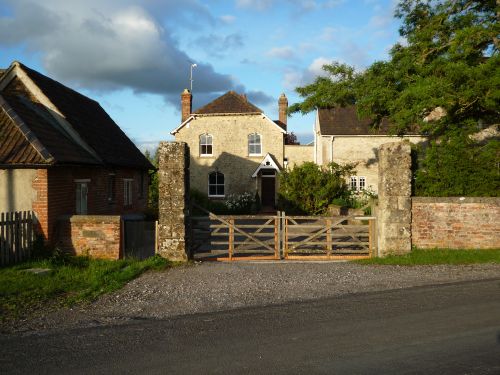
Thursday 23rd June 2011 - In Search of Great Manor 2

Found the pillars! The pillars that once stood either side of the main entrance to Great Manor have been snapped. They now stand, minus the balls on top, at the entrance to Cortington Manor, near Boyton in the Wylye valley. According to AS they were removed from where they had stood in Chitterne for hundreds of years and GIVEN to the Duchess of Newcastle in about 1967.
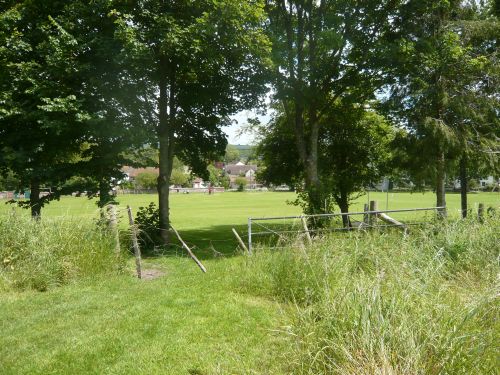
This is where the pillars were once sited in Chitterne, between Garston and the sportsfield. Now, I wonder what happened to the house?
Wednesday 8th June 2011 - In Search of Great Manor
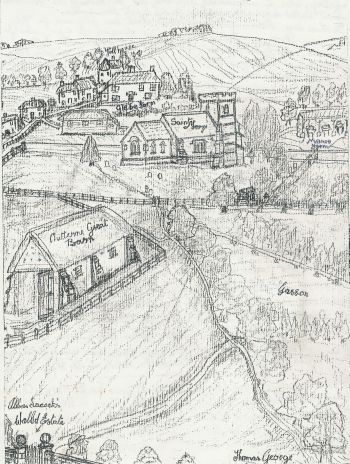
The tour of Garston taken two weeks ago (see Dispelling Myths below), led me to ponder again on the house that once stood in our sportsfield. I have this theory that it was the Manor house for Chitterne All Saints, but how to prove it? There are no pictures of the building at the Record Office, I asked a long time ago. As to old maps: I've only found it marked on the Andrew's and Drury's map of 1773, which is notorious for having swapped the two Chitterne parishes around. The only clue we have to what the house would have looked like is Coach House, which was originally the stables for the Great House.
Why Great House or Great Manor? Well, here's another part of my theory: First, Coach House used to be called Great Houses or Big Houses after it was converted into farmworker's cottages in the 1800's; second, All Saints Manor Farmhouse was known as Little Manor, before it burnt down and was rebuilt in about 1852, and if you have a Little Manor surely you also have a Great Manor; third, on a parish map of about 1850 Garston is shown stretching eastwards as far as Manor Farmhouse, in other words it was all part of the same estate; an estate owned by Matthew Michell on the 1773 map, but which had earlier been owned by the Abbess of Lacock.
Villager EG's great great grandfather Thomas worked on the conversion of the stables into the farmworker's cottages in the early 1800's and drew a sketch (pictured) of the view looking towards Chitterne St Mary from high up in the stables building. Thomas G's sketch doesn't show much of the sportsfield area but it does show in the far bottom left corner the gateway to Great Manor and interestingly the drive out through Garston (Gasson) without the avenue of lime trees which mark the drive today.
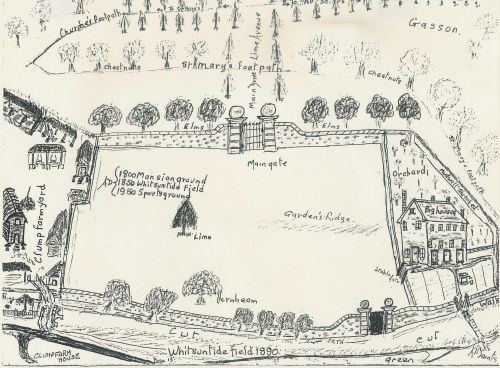
EG himself has drawn two more sketches which help with my theory. The first of EG's sketches is of Whitsuntide Field 1890. This is the name our sportsfield was known by at that time when it was the site of the annual Whitsuntide Fete. It shows the wall surrounding the site of Great Manor intact, and the main entrance and ball-topped pillars still in situe leading out to Garston. Incidentally, I discovered the pillars are still standing, minus the balls, at Boyton, where they were erected about 1967 at the Duchess of Newcastle's house. You can see them on the Googlemap streetview of Cortington Manor Cottage, Boyton. Also interesting to note is Clump Farmyard on the left of the sketch on the site now occupied by St Mary's Close.
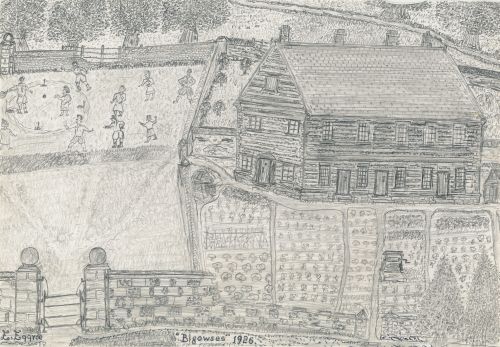
The second of EG's shows part of the sportsfield in 1926 with the walls now tumbling down and the farmworker's cottages (Bigowses) with their patches of garden in front.
This is as far as it goes at the moment. Perhaps more will be revealed as time goes on. You can read more about Garston's history here.
Friday 3rd June 2011 - Kneeler 10
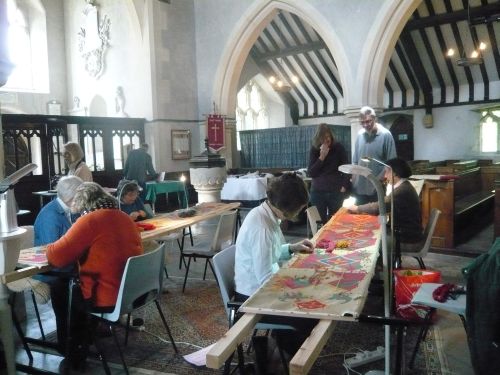
Since 28th May and until 5th June we Chitterne Kneelers are displaying our project in Chitterne Church as part of the Wylye Valley Art Trail this year. The work is on show from 10.30 till 5.30 each day and members of the group come to the church to stitch on the two long altar rail kneelers at the same time. Stitching every day like this has meant we have made great strides this week. The first long kneeler is almost ready to have its second lot of frames moved.
We haven't been inundated with visitors but those who have ventured out have for the most part been dedicated stitchers themselves and without exception they have marvelled at the fineness of our canvas, our choice of vibrant colours and the designs. It seems that church kneelers are generally stitched on 12 to the inch canvas or coarser, not 14 to the inch as we are using. One visitor who was definitely not a stitcher asked if we were going to cut the long kneeler into smaller ones when we had finished it! This prompted us to collect daft comments for inclusion in the book of the project. So far no other comment has induced such hilarity amongst us stitchers (after the guest had left the building of course).
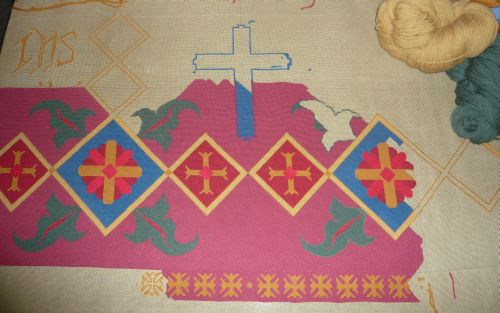
The centre section of the altar rail kneeler is coming along well.
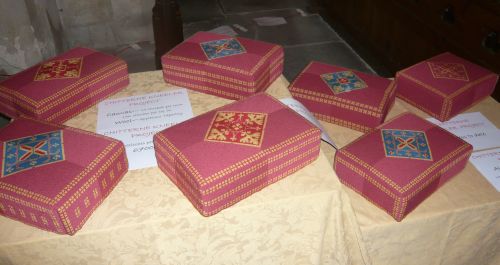
Seven individual kneelers are finished now and on display too.